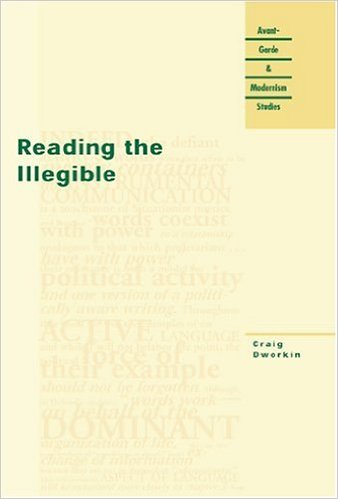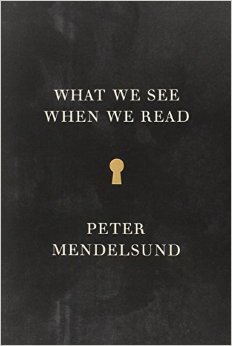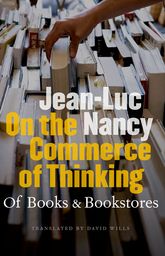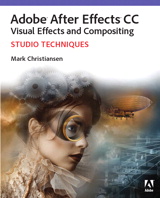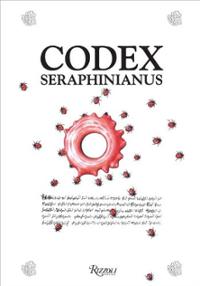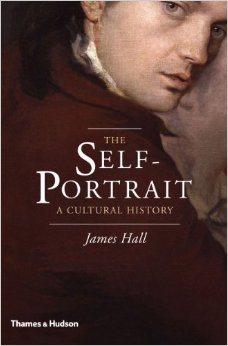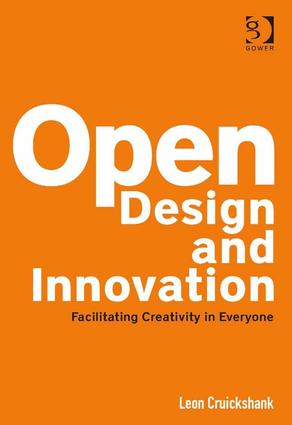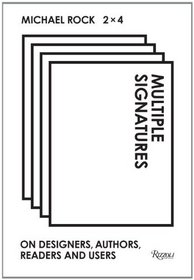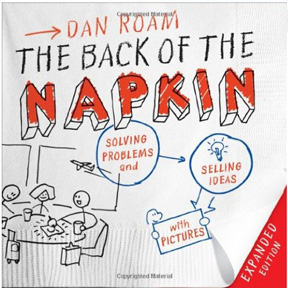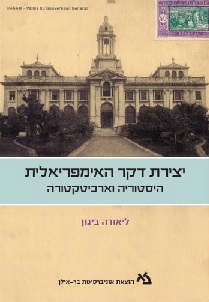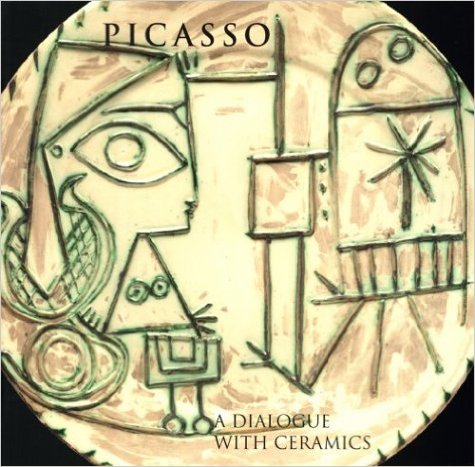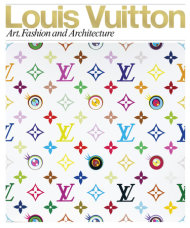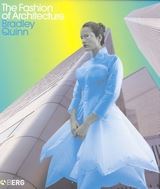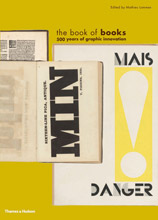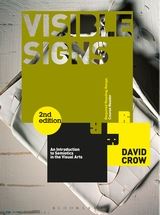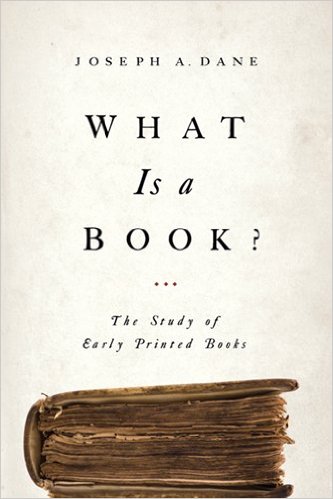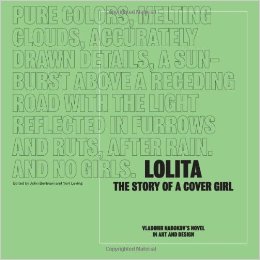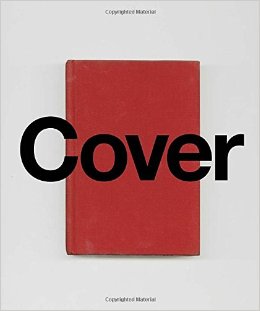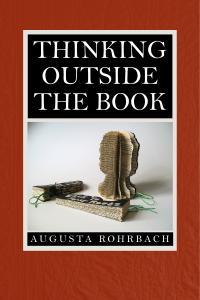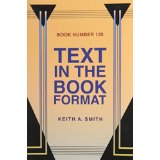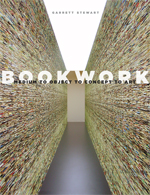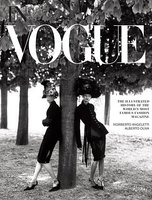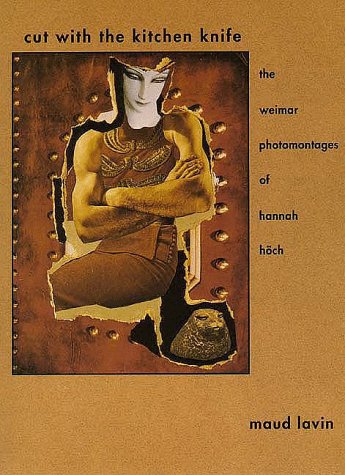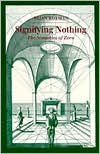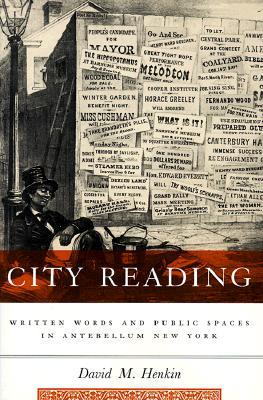עוד בפרק זה:
מרץ 2016
הספרייה מציעה לקוראיה מידי חודש רשימת ספרים וכתבי-עת חדשים שנוספו לאוספיה כל רשומה מכילה: מס' מיון, מחבר, כותר, מוציא לאור, שנת הוצאה , נושאים ומס' מערכת. לפרטים נוספים של הספר יש ללחוץ על תמונת העטיפה. כדי לראות מצב ההשאלות יש ללחוץ על כותר.
|
|
02 SCH Jeffrey T. Schnapp, Matthew Battles. The library beyond the book
Cambridge, Massachusetts : Harvard University Press, 2014 Abstract With textbook readers and digital downloads proliferating, it is easy to imagine a time when printed books will vanish. Such forecasts miss the mark, argue Jeffrey Schnapp and Matthew Battles. Future bookshelves will not be wholly virtual, and libraries will thrive―although in a variety of new social, cultural, and architectural forms. Schnapp and Battles combine deep study of the library’s history with a record of institutional and technical innovation at metaLAB, a research group at the forefront of the digital humanities. They gather these currents in The Library Beyond the Book, exploring what libraries have been in the past to speculate on what they will become: hybrid places that intermingle books and ebooks, analog and digital formats, paper and pixels. Libraries have always been mix-and-match spaces, and remix is their most plausible future scenario. Speculative and provocative, The Library Beyond the Book explains book culture for a world where the physical and the virtual blend with ever increasing intimacy.
Subject Libraries -- History.
Libraries and society Libraries -- Aims and objectives. Libraries and electronic publishing. Libraries -- Forecasting. 40007 |
|
|
028.02 DWO Dworkin, Craig Evanston, Illinois : Northwestern University Press, 2003
Contents Radical Formalism -- The Politics of Noise -- Destroying Redness -- The Inhumanness of Language -- Gamble and Sharp --Cover-Up -- The Aesthetics of Censorship.
Abstract A poet takes another’s text, excises this, prints over that, cancels, erases, rearranges, defaces--and generally renders the original unreadable, at least in its original terms. What twentieth-century writers and artists have meant by such appropriations and violations, and how the "illegible" results are to be read, is the subject Craig Dworkin takes up in this ambitious work. In his scrutiny of selected works, and with reference to a rich variety of textual materials--from popular and scientific texts to visual art, political and cultural theories, and experimental films--Dworkin proposes a new way of apprehending the radical formalism of so-called unreadable texts. Dworkin unveils what he describes as "the politics of the poem"--what is signified by its form, enacted by its structures, and implicit in the philosophy of language; how it positions its reader; and other questions relating to the poem as material object. In doing so, he exposes the mechanics and function of truly radical formalism as a practice that move beyond aesthetic considerations into the realms of politics and ideology. Reading the Illegible asks us to reconsider poetry as a physical act, and helps us to see how the range of a text’s linguistic and political maneuvers depends to a great extent on the material conditions of reading and writing as well as the mechanics of reproduction.
Subject Books and reading
Poetry. Poetics. 39988 |
|
|
028.02 MEN
Mendelsund, Peter New York : Vintage Books, a division of Random House LLC, 2014
Abstract A gorgeously unique, fully illustrated exploration into the phenomenology of reading—how we visualize images from reading works of literature, from one of our very best book jacket designers, himself a passionate reader. What do we see when we read? Did Tolstoy really describe Anna Karenina? Did Melville ever really tell us what, exactly, Ishmael looked like? The collection of fragmented images on a page—a graceful ear there, a stray curl, a hat positioned just so—and other clues and signifiers helps us to create an image of a character. But in fact our sense that we know a character intimately has little to do with our ability to concretely picture our beloved—or reviled—literary figures. In this remarkable work of nonfiction, Knopf’s Associate Art Director Peter Mendelsund combines his profession, as an award-winning designer; his first career, as a classically trained pianist; and his first love, literature—he considers himself first and foremost as a reader—into what is sure to be one of the most provocative and unusual investigations into how we understand the act of reading.
"An illustrated exploration into the phenomenology of reading"-- Provided by publisher. Subject Books and reading
Phenomenology Visual perception in literature. 40011 |
|
|
028.02 NAN Nancy, Jean-Luc New York : Fordham University Press, 2009
Contents The idea and character of the book -- The book’s end in itself -- The people of the book -- Interminable reading -- The publication of the umpublished -- Book open and closed -- The scents of the bookstore -- The commerce of thinking -- The matter of books -- Electronic supplement, binary reprise, digital conterpoint.
Abstract Jean-Luc Nancy’s On the Commerce of Thinking concerns the particular communication of thoughts that takes place by means of the business of writing, producing, and selling books. His reflection is born out of his relation to the bookstore, in the first place his neighborhood one, but beyond that any such perfumery, rotisserie, patisserie,as he calls them, dispensaries of scents and flavors through which something like a fragrance or bouquet of the book is divined, presumed, sensed.On the Commerce of Thinking is thus not only something of a semiology of the specific cultural practice that begins with the unique character of the writer’s voice and culminates in a customer crossing the bookstore threshold, package under arm, on the way home to a comfortable chair, but also an understated yet persuasive plea in favor of an endangered species. In evoking the peddler who, in times past, plied the streets with books and pamphlets literally hanging off him, Nancy emphasizes the sensuality of this commerce and reminds us that this form of consumerism is like no other, one that ends in an experience-reading-that is the beginning of a limitless dispersion, metamorphosis, and dissemination of ideas. Making, selling, and buying books has all the elements of the exchange economy that Marx analyzed--from commodification to fetishism--yet each book retains throughout an absolute and unique value, that of its subject. With reading, it gets repeatedly reprinted and rebound. For Nancy, the book thus functions only if it remains at the same time open and shut, like some Moebius strip. Closed, it represents the Idea and takes its place in a canon by means of its monumental form and the title and author’s name displayed on its spine. But it also opens itself to us, indeed consents to being shaken to its core, in being read each time anew.
Subject Books and reading
Booksellers and bookselling -- Philosophy 40008 |
|
|
535.8 NOV Novotny, Lukas, Bert Hecht Principles of nano-optics / Second edition
Cambridge : Cambridge University Press, 2012. Contents Machine generated contents note: Preface; 1. Introduction; 2. Theoretical foundations; 3. Propagation and focusing of optical fields; 4. Resolution and localization; 5. Nanoscale optical microscopy; 6. Near-field optical probes; 7. Probe-sample distance control; 8. Optical interactions; 9. Quantum emitters; 10. Dipole emission near planar interfaces; 11. Photonic crystals, resonators, and cavity optomechanics; 12. Surface plasmons; 13. Optical antennas; 14. Forces in confined fields; 15. Fluctuation-induced interactions; 16. Theoretical methods in nano-optics; Appendices; Index.
Abstract First published in 2006, this book has become the standard reference on nano-optics. Now in its second edition, the text has been thoroughly updated to take into account new developments and research directions. While the overall structure and pedagogical style of the book remain unchanged, all existing chapters have been expanded and a new chapter has been added. Adopting a broad perspective, the authors provide a detailed overview of the theoretical and experimental concepts that are needed to understand and work in nano-optics, across subfields ranging from quantum optics to biophysics. New topics of discussion include: optical antennas; new imaging techniques; Fano interference and strong coupling; reciprocity; metamaterials; and cavity optomechanics. With numerous end-of-chapter problem sets and illustrative material to expand on ideas discussed in the main text, this is an ideal textbook for graduate students entering the field. It is also a valuable reference for researchers and course teachers"-- Provided by publisher.
"The introduction of new concepts and applications. Applications of near-field optics soon covered a large span ranging from fundamental physics and materials science to biology and medicine. Following a logical development, the strong interest in near-field optics gave birth to the fields of singlemolecule spectroscopy and plasmonics, and inspired new theoretical work associated with the nature of optical near-fields. In parallel, relying on the momentum of the flowering nanosciences, researchers started to tailor nanomaterials with novel optical properties. Photoniccrystals, single-photon sources and optical microcavities are products of this effort"-- Provided by publisher. Subject Near-field microscopy
Nanostructured materials Quantum optics Photonics 39962 |
|
|
supply chain management / Eleventh edition
Boston : Pearson, 2014. Subject Production management
39970 |
|
|
658.51 PTA Ptak, Carol A. Boca Raton, Fla. : St. Lucie Press, 2004
Subject Production management
Business logistics Theory of constraints (Management) 39967 |
|
|
planning, and operation/ Sixth edition
Production, Boston : Pearson, 2016 Contents Preface -- Building a strategic framework to analyze supply chains -- Understanding the supply chain -- Supply chain performance : achieving strategic fit and scope -- Supply chain drivers and metrics -- Designing the supply chain network -- Designing distribution networks and applications to online sales -- Network design in the supply chain -- Designing global supply chain networks -- Demand forecasting in a supply chain -- Aggregate planning in a supply chain -- Sales and operations planning : planning supply and demand in a supply chain -- Coordination in a supply chain -- Planning and managing inventories in a supply chain -- Managing economies of scale in a supply chain : cycle inventory -- Managing uncertainty in a supply chain : safety inventory -- Determining the optimal level of product availability -- Transportation in a supply chain -- Managing cross-functional drivers in a supply chain -- Sourcing decisions in a supply chain -- Pricing and revenue management in a supply chain -- Sustainability and the supply chain -- Discussion questions -- Bibliography -- Subject index.
Subject Marketing channels -- Management.
Delivery of goods -- Management. Physical distribution of goods -- Management. Customer services -- Management. Industrial procurement Materials management Business logistics 39971 |
|
|
Berkeley, California : Peachpit, [2014]
Title Sub. Adobe After Effects
Subject Cinematography -- Special effects -- Data processing.
Image processing -- Digital techniques. 39972 |
|
|
Oxford : Legenda, 2003
Contents A Renaissance enigma : Piero di Cosimo’s Forest fire / Catherine Whistler -- Delacroix and literature / J.J.L. Whitely -- On chess, chests, and kingship : two miniatures of Alfonso X of Castile in the Libros de acedrex, dados e tablas (1283) / Kirstin Kennedy -- Early illustrations of Tasso’s Gerusalemme liberata / Julian Brooks -- The literalism of William Blake’s illustrations to the Divine comedy / Antonella Braida -- D’Annunzio, his illustrators and Italian Pre-Raphaelism / Giuliano Pieri -- "The art consists of hiding the art" : Castiglione and Raphael / Ben Thomas -- "The vantage-ground of abstraction" : Charles Lamb on reading and viewing / Luisa Calè -- Graphic revolutions : the role of the pictorial in Jules Vallès’s Vingtras trilogy / Rachael Langford -- Visual and textual synergy in Stéphane Mallarmé / Damian Catani -- Art/history between the linguistic and pictorial "turns" / Martin Gaughan.
Abstract What was the role of images in the western tradition? And what was their relationship with the printed work? This wide-ranging collection of essays offers a critical review of how the Western tradition set out to compare visual arts and texts, encompassing thirteenth-century Spanish miniatures, Italian Renaissance painting and book illustrations, the explosion of inter-arts comparisons in the works of such diverse writers as Blake, Mallerme and D’Annunzio, and the modern debate on the visual arts.
Subject Art and literature.
Literature in art. Art in literature. Ut pictura poesis (Aesthetics) Illustration of books. 40020 |
|
|
7.036 SER Serafini , Luigi New York : Rizzoli, 2013
Abstract An extraordinary and surreal art book, this edition has been redesigned by the author and includes new illustrations. Ever since the Codex Seraphinianus was first published in 1981, the book has been recognized as one of the strangest and most beautiful art books ever made. This visual encyclopedia of an unknown world written in an unknown language has fueled much debate over its meaning. Written for the information age and addressing the import of coding and decoding in genetics, literary criticism, and computer science, the Codex confused, fascinated, and enchanted a generation. While its message may be unclear, its appeal is obvious: it is a most exquisite artifact. Blurring the distinction between art book and art object, this anniversary edition-redesigned by the author and featuring new illustrations-presents this unique work in a new, unparalleled light. With the advent of new media and forms of communication and continuous streams of information, the Codex is now more relevant and timely than ever.
Per.Sub. Serafini, Luigi 1949-
Subject Art, Modern -- 20th century.
Surrealism Imaginary languages. Imaginary societies. Artists’ books. Encyclopedias and dictionaries -- Miscellanea. Fantasy in art. Outsider art 39986 |
|
|
7.041.53 HAL Hall, James London : Thames & Hudson, 2015.
Contents Medieval origins -- A craze for mirrors -- The artist in society -- The renaissance artist as hero -- Mock-heroic self-portraits -- The artist’s studio -- At the crossroads -- Coming home : into the nineteenth century -- Sex and genius -- Beyond the face : modern and contemporary self-portraits.
Abstract In this broad cultural survey, art historian and critic James Hall brilliantly maps the history of self-portraiture, from the earliest myths of Narcissus to the prolific self-image-making of contemporary artists. His intelligent and vivid account shows how artists’ depictions of themselves have been part of a continuing tradition that reaches back for centuries. Along the way he reveals the importance of the medieval ’mirror craze’; the explosion of the genre during the Renaissance; the confessional self-portraits of Titian and Michelangelo; the role of biography for serial self-portraitists such as Courbet and van Gogh; themes of sex and genius in works by Munch, Bonnard and Modersohn-Becker; and the latest developments of the genre in the era of globalization. The full range of self-portraits is covered here, from comic and caricature self-portraits to ’invented’ or imaginary ones, as well as key collections of self-portraiture such as that of the Medici in Florence. Throughout, Hall asks why - and when - artists have chosen to make self-portraits, and looks deeply into the worlds and mindsets of the artists who have created them. Comprehensive and beautifully illustrated, the book features the work of a wide range of artists including Alberti, Caravaggio, Courbet, Dürer, Emin, Gauguin, Giotto, Goya, Kahlo, Koons, Magritte, Mantegna, Picasso, Raphael, Rembrandt and Warhol. Offering a rich and lively history, The Self-Portrait is an essential read for all those interested in this most enduringly popular and humane of art forms.--Publisher.
Subject Self-portraits
Artists -- Portraits. Art appreciation Self-portraits -- History. Portraits -- History. 39983 |
|
|
7.052 CRU Cruickshank, Leon Farnham, Surrey : Gower, 2014
Contents Introduction to open design -- Innovation and design in context -- Mass creativity, design beyond the design profession -- Design responses to mass creativity -- Open design futures.
Abstract Open innovation, crowd sourcing, democratised innovation, vernacular design and brand fanaticism are amongst a handful of new approaches to design and innovation that have generated discussion and media coverage in recent years. In practice, these ideas are often inspiring propositions rather than providing pragmatic strategies. Open Design and Innovation develops the argument for a more nuanced acknowledgement and facilitation of ’non-professional’ forms of creativity; drawing on lessons from commercial design practice; theoretical analysis and a wider understanding of innovation. Specifically this book examines: innovation and design, the reality and myth of mass creativity and the future of the design profession, through a series of case studies of new approaches to open design practices. The text draws on academic research, practical experience of the author in delivering open design projects and first hand interviews with leaders in the fields. The author challenges the notion of the designer as ’fountain-head’ of innovation and, equally, the idea of ’user creativity’ as a replacement for traditional design and innovation. The book offers a critique of the hype surrounding some of the emerging phenomena and a framework to help understand the emerging relationship between citizens and designers. It goes on to propose a roadmap for the development of the design profession, welcoming and facilitating new modes of design activity where designers facilitate creative collaborations.
Subject Design -- Technological innovations.
Design -- Research. Creative ability Democratization. Technological innovations 39620 |
|
|
New York : Rizzoli, 2013
Contents Authorship : The problem of provenance -- Designer as author -- Metaphors we design by / with Rob Giampietro -- Paradox on the graphic artist / J.-F. Lyotard -- Brand as voice -- Hearing voices / with Paul Elliman -- Fuck content -- II. Projects : it is what it is (or, are we done yet?) -- Any and all / with Michael Speaks -- Post-occupancy / Rem Koolhaas -- 17 ways of looking at a thing / 2x4 and AMO -- Clichés : 13 flowers / 2x4 ; Received ideas / with Enrique Walker ; Guilt / 2x4 -- Pradapedia -- IIT : An introduction ; Irises / Iwan Baan ; Bias / with Lucia Allais and Rem Koolhaas ; Iconomania / 2x4 -- Ghost book / Jeannie Kim -- Superficiality: literal and phenomenal -- 1:4 / 2x4 -- Staring at walls: 2x4 for architects / Lucia Allais -- III. Criticism : Deprofessionalization -- What is this thing called design criticism I & II / with Rick Poynor -- Mad Dutch disease -- Ameridam: the Dutchification of America -- The continental divide / with Jan van Toorn -- "Just a few small things ..." / with Elizabeth Rock ; Designed screens / with Paul Elliman -- Notes for a lecture titled: Empire of screens -- IV. Readership : If you don’t see the fnord it can’t eat you -- Wired dictionary / with Irwin Chen -- Generation Praktikum / with Alexander Strube -- Two translations / Dan Michaelson, Tamara Maletic -- On museums / with Susan Sellers : A proposal for a museum of the ordinary ; Th MO Graffiti Museum / 2x4 -- Diagram / 2x4 -- Pole dance / Floria Idenburg, Jing Liu.
Abstract This book explores the diverse voices and disciplines that comprise the process of graphic design through the lens of authorship, criticism, projects, and collaborations. It includes essays, interviews, diagrams, annotations, illustrated lectures and case studies from Michael Rock and contributors such as Susan Sellers, Georgie Stout, Rem Koolhaas, Mark Wigley, Paul Elliman, Enrique Walker, Rick Poynor and Lucia Allais among many others. Multiple Signatures examines all aspects of contemporary visual culture from branding and authorship to urban screens, conspiracy theory and t-shirt design.
In the tradition of John Berger’s Ways of Seeing, Michael Rock, principal and founder of 2x4 Design in New York, explores the history and development of twenty-first-century visual and design culture. This book presents a thoughtful and witty exploration of graphic design today produced by Michael Rock of 2x4, the powerhouse creative firm that partners with some of the most design-savvy brands and institutions in the world to develop design systems that draw on both modernist traditions and the exuberance of contemporary life. Set forth in an engaging and humorous way, Multiple Signatures examines all aspects of modern design, from typography to the evolution of screens in advertising to trusting one’s own creative instincts, through a series of smart and often irreverent essays and images. Using 2x4’s own collaborations and projects as examples, and drawing on the experience of the contributing authors, the result is not a clinical textbook, but a fantastic and thought-provoking work about the limitless applications of design. A must-have for design students and professionals, Multiple Signatures challenges standard ways of understanding design and inspires readers to think of graphic design as a building block for all creative disciplines. Corp.Sub. 2x4 Design Studio New York, NY
Subject Design
Graphic arts 39994 |
|
|
New York Portfolio, 2009
Abstract Tries to enhance analytical skills by building up one’s intrinsic abilities in a primer for business leaders on how to develop ideas and enable faster results using to-the-point visual methods.
"There is no more powerful way to prove that we know something well than to draw a simple picture of it. And there is no more powerful way to see hidden solutions than to pick up a pen and draw out the pieces of our problem." So writes Dan Roam in The Back of the Napkin, the international bestseller that proves that a simple drawing on a humble napkin can be more powerful than the slickest PowerPoint presentation. Drawing on twenty years of experience and the latest discoveries in vision science, Roam teaches readers how to clarify any problem or sell any idea using a simple set of tools. He reveals that everyone is born with a talent for visual thinking, even those who swear they can’t draw. And he shows how thinking with pictures can help you discover and develop new ideas, solve problems in unexpected ways, and dramatically improve your ability to share your insights. Take Herb Kelleher and Rollin King, who figured out how to beat the traditional hub-and-spoke airlines with a bar napkin and a pen. Three dots to represent Dallas, Houston, and San Antonio. Three arrows to show direct flights. Problem solved, and the picture made it easy to sell Southwest Airlines to investors and customers. Now with more color, bigger pictures, and additional content, this new edition does an even better job of helping you literally see the world in a new way. Join the teachers, project managers, doctors, engineers, assembly-line workers, pilots, football coaches, marine drill instructors, financial analysts, students, parents, and lawyers who have discovered the power of solving problems with pictures. Subject Design Problem solving -- Audio-visual aids. Management -- Audio-visual aids. Visualization Creative ability in business 39978 |
|
|
711.432(569.4) מכט מכטר, איתן בין האינטימי לאנונימי במרחב האורבני : מבט סוציו-תרבותי על תל אביב תל אביב : רסלינג, 2015
Contents 1. תרבות אורבנית - ’עיר עולם’ -- 2. האתיקה הפרוטסטנטית ורוח האורבניזם -- 3. מזמן למרחב באתוס העירוני -- 4. פרדוקס החירות - בין אינדיבידואליזם לניכור בעיר -- 5. הראווה כעקרון יסוד במרחב העירוני -- 6. אהבה (כואבת) בעיר הגדולה -- 7. קיטוב חברתי - למי שייכת העיר? -- 8. הקהילה השכונתית כמענה לניכור -- 9. תל אביב - האתגר הרוחני.
Abstract "ספר זה מבקש לתרום לשיח סוציו-תרבותי על העיר העברית-הקוסמופוליטית הראשונה, שיח שעשוי לשמש חלופה לעולם התוכן הכלכלי השגור ביחס לתהליכים אורבניים. הניסיון לפענח את סוד הפיכתה של העיר העברית הראשונה לכדי "עיר עולם" נעשה כאן באמצעות בחינת הייחודיות של התרבות והאתוס התל אביביים בזיקה לנורמות קיום אוניברסליות. הדיון החברתי-תרבותי מציג את המתח בין רציונליות לתשוקה אשר עליו מתבסס הקפיטליזם המאוחר, כל זאת לצד הצגת ביטוייו של מתח בזירה העירונית, הכללית והמקומית - הן בכיבוש המרחב על ידי ההון והן בעיצוב תודעה וסגנון צרכני מחופצן.
רב-תרבותיות ודחיסות הם מאפיינים אורבניים מובהקים התורמים לעשייה עירונית המבוססת על פתיחות, יצירתיות, חדשנות ותחכום, אבל גם משקפת מופעים של התכנסות וניכור. תהליך האינדיבידואציה משמש ציר מרכזי בתרגום הסובייקט הרציונלי לנושא תשוקה צרכנית פרי השיטה הקפיטליסטית. האינדיבידואציה ותהליך המיתוג העצמי מצמיחים צורות מגוונות של זהות וסגנון ייחודיים ודינמיים, אך מכבידים על בניית יחסים מבוססי רגש ומחויבות. "הקהילה השכונתית" מוצעת בספר זה כפתרון אפשרי לאנונימיות ולאינסטרומנטליות של היחסים הבין-אישיים, פתרון המאפשר קיום יחסים בין-אישיים בכרך ללא פגיעה באופי הדינמי של ההשתנות והמגוון, אגב יצירת גרעין יציב, טריטוריאלי או וירטואלי. הפרק החותם את הספר דן באתגר הרוחני של העיר הגדולה להצמיח מתוכה ביטויים של "חירות קשה" לאור תפיסתו של לוינס, כתחליף ל"פיצול" הסובייקט והניכור העצמי המאיימים על הנפש העירונית". -- מעטפת אחורית. Subject City and town life -- Israel -- Tel Aviv-Yafo.
Sociology, Urban -- Israel -- Tel Aviv. Culture -- Israel. Tel Aviv-Yafo (Israel) -- Social conditions 39969 |
|
|
רמת-גן : הוצאת אוניברסיטת בר-אילן, תשע"ד 2014
Abstract בספר זה נבחנת יצירת המרחב העירוני של דקר (סנגל) – בירת הפדרציה של מערב אפריקה הצרפתית, ומתוך כך מתבהר תפקידה של התרבות בייצור מרחב קולוניאלי עירוני. המושגים המשמשים בתהליך יצירת העיר הקולוניאלית במערב אפריקה והצדדים הפיזיים הכרוכים בכך חושפים משא ומתן מורכב, בעל אופי סימבולי ופוליטי, בין קבוצות אוכלוסייה שונות. יצירת דקר הקולוניאלית ותפיסתה כעיר אימפריאלית בדמיונם של הצרפתים הייתה במידה רבה תרגיל בבנייה עצמית של זהות מטרופולינית ברמה הלאומית והתרבותית. היא הייתה גם תרגיל בבניית ה’טבעים’ שיוחסו לקבוצות הילידיות שהרכיבו את הרוב העירוני בדקר. בהשראת עולם דימויים שהוכוון היטב בידי ממשלת צרפת, רוב זה עבר פרימיטיביזציה, נשלט והושתק. בניגוד למה שנהוג לחשוב על אודות הארכיטקטורה הקולוניאלית, הקולוניזטורים הצרפתים לא שעתקו באופן סתמי את הארכיטקטורה שהייתה מוכרת להם מבית, שכן בשום מקום באירופה לא ניתן למצוא את טיפוסי המבנים שנבנו באפריקה. חקר תפיסת המרחב הקולוניאלי העירוני כקרקע מאותגרת בעלת דינמיות פנימית נוכח המפגש בין קבוצות התושבים השונות המתקיימות במרחב זה מביא בחשבון את קולות המוכפפים ואת אופני ארגון היישוב שלהם, את חומרי הבנייה שהעדיפו, את הטרמינולוגיה העירונית שנקטו ואת האופנים שבהם דחו את המושגים והנהגים הקולוניאליים בתחום זה, או השלימו עמם וקיבלו אותם. הספר, המבוסס על מקורות היסטוריים מגוונים ודן במודלים מבניים רבים, תורם תרומה ייחודית לשדה המחקר ההולך ומתבסס של חקר ההיסטוריה העירונית של אירופה מחוץ לאירופה. -- כריכה אחורית Subject Architecture -- Senegal -- Dakar.
Architecture -- Senegal -- Dakar -- History -- 19th century. Architecture, Colonial -- Senegal -- Dakar -- History -- 20th century Architecture -- Political aspects -- Senegal -- Dakar -- History. City planning 39956 |
|
|
72.01 HOL Hollier, Denis Cambridge, Mass. : MIT Press, 1992
Abstract Over the past 30 years the writings of Georges Bataille have had a profound influence on French intellectual thought, informing the work of Foucault, Derrida, and Barthes, among others. Against Architecture offers the first serious interpretation of this challenging thinker, spelling out the profoundly original and radical nature of Bataille’s work.
Per.Sub. Bataille, Georges, 1897-1962 -- Criticism and interpretation.
Bataille, Georges, 1897-1962 -- Knowledge -- Architecture Subject Architecture and literature
39963 |
|
|
ceramics from the Marina Picasso Collection.
Tacoma, WA : University of Washington Press, 1998 Abstract Picasso’s interest in ceramics arose briefly at the turn of the century and later, between 1945 and 1973, ran parallel to, sculpture, and engraving. In his sixties, Picasso tackled ceramics again, attracted by the material’s potential, by the way its plastic properties allowed him to adapt it to his imagination. A number of skilled ceramists lived near his home in Vallauris, including the Ramie family, whose Madoura workshop produced the vast majority of the Spanish artist’s work. This volume presents 61 ceramic pieces by Picasso that range from unfired clay to ceramics fired at high temperature and porcelain decorated with paint and enamel. All of the works are illustrated in color, including plates, dishes, vases, bottles, and zoomorphic jugs; wall, floor, roof tiles, and fragments of brick handled and metamorphosed by the artist’s hand. Also included are pieces that are sculptures in their own right. Some items are enameled or painted, others incised or engraved, while the function of still others was transformed through the magical power of the artist. Picasso succeeded in giving Mediterranean ceramics new impetus, in tune bot his genius and 20th century art.
Per.Sub. Picasso, Pablo, 1881-1973 -- Exhibitions.
Picasso, Marina -- Art collections -- Exhibitions. Corp.Sub. Tacoma Art Museum -- Exhibitions.
Subject Pottery -- Private collections -- Washington (State) -- Tacoma -- Catalogs.
Ceramic sculpture -- Private collections -- Washington (State) -- Tacoma -- Catalogs. 39974 |
|
|
Amsterdam : Elsevier/Morgan Kaufmann, 2011
Contents Getting into the mood -- Sampling the real world -- The single image -- Snapshots of time: the visual narrative -- Animating the user experience -- Involving others.
Abstract Sketching Working Experience: The Workbook provides information about the step-by-step process of the different sketching techniques. It offers methods called design thinking, as a way to think as a user, and sketching, a way to think as a designer. User-experience designers are designers who sketch based on their actions, interactions, and experiences. The book discusses the differences between the normal ways to sketch and sketching used by user-experience designers. It also describes some motivation on why a person should sketch and introduces the sketchbook. The book reviews the different sketching methods and the modules that contain a particular sketching method. It also explains how the sketching methods are used. Readers who are interested in learning, understanding, practicing, and teaching experience design, information design, interface design, and information architecture will find this book relevant.•Features standalone modules detailing methods and exercises for practitioners who want to learn and develop their sketching skills •Extremely practical, with illustrated examples detailing all steps on how to do a method •Excellent for individual learning, for classrooms, and for a team that wants to develop a culture of design practice •Perfect complement to Buxton’s Sketching User Experience or any UX text •Author-maintained companion website at http://grouplab.cpsc.ucalgary.ca/sketchbook/
Subject Drawing -- Technique.
Freehand technical sketching -- Technique. User interfaces (Computer systems) -- Design. 39980 |
|
|
New York : Rizzoli, 2009
Contents Architecture essay : Learning from Louis Vuitton / Tato Igarashi -- Art essay : 33 colors / Jill Gasparina -- Fashion essay : The empire of signs / Olivier Saillard -- Glossary of creators.
Abstract Offers a critical selection of the creative exchanges between Louis Vuitton and an ever-growing list of artists, architects, photographers and designers. Examines the relationships the world’s leading luxury brand has forged with key figures involved in the making of contemporary culture. A large-format tribute to the influential brand artist’s most visible collaborations features critical essays that examine and position his patronage, in an exploration of the art, fashion, and architecture that he created in conjunction with such contemporaries as Annie Liebovitz, Vanessa Beecroft, and Olafur Eliasson. "Luxury and art have never been more closely linked than they are in these early years of the twenty-first century. Virtually all the world’s major luxury houses have associated themselves with contemporary art through sponsorships, commissions, or foundations, and these points of exchange nourish the increasingly symbiotic relationship between fashion, art, and other design disciplines. Of all modern luxury brands, Louis Vuitton can claim to maintain the richest and most varied associations with the world of art. Included in this volume are Louis Vuitton’s important collaborations with an elite group of artists, architects, designers, and photographers, such as Jun Aoki, Shigeru Ban, Vanessa Beecroft, Olafur Eliasson, Zaha Hadid, David LaChapelle, Jean Lariviere, Annie Leibovitz, Takashi Murakami, Richard Prince, Stephen Sprouse, James Turrell, Inez Van Lamsweerde, and Vinoodh Matadin. The book is structured as a seductive anthology of the house’s most visible collaborations. Critical essays examine and position Louis Vuitton’s patronage - under the guidance of Artistic Director Marc Jacobs - during one of the most fertile periods of contemporary art and design Per.Sub. Vuitton, Louis, 1821-1892.
Corp.Sub. Louis Vuitton (Firm) -- History.
Subject Fashion design
Fashion and art -- History. Fashion and architecture -- History. Luxury goods industry -- France -- History 39985 |
|
|
745:687.01 QUI Quinn, Bradley Oxford, UK ; New York : Berg, 2003
Contents Fashioning the metropolis -- Mapping fashion space -- Dressing the void -- Urban nomads -- Designing, dwelling, thinking : Hussein Chalayan -- Fashioning architecture and art -- Intimate architecture : Lucy Orta’s social structures -- Fashion photography -- Fluid form.
Abstract "The Fashion of Architecture is the first attempt to investigate the contemporary relationship between architecture and fashion in considerable depth by examining the ideas, imagery, techniques and materials used by visionaries such as Martin Margiela, Issey Miyake, Alexander McQueen, Tadao Ando and Daniel Libeskind.
Architecture is making its presence felt in cutting-edge fashion. The pliable metals, membrane structures, lightweight glasses and plastics used in building construction are creeping onto the catwalk. As they do so, their impact on recent textile developments has produced fabrics that enable clothing to act as individual climate-controlled environments that can exchange information with embedded sensors, resulting in wearable ‘dwellings’ that act as both shelter and clothing. At the same time, architects are borrowing the techniques of pleating, stapling, cutting and draping from traditional tailoring to design buildings that are flexible, interactive, inflatable and even portable. Although the relationship between architecture and fashion was recognized more than a century ago, the connection between them has rarely been explored by historians, designers or practicing architects. The Fashion of Architecture is the first attempt to investigate the contemporary relationship between architecture and fashion in considerable depth, by examining the ideas, imagery, techniques and materials used by visionaries such as Martin Margiela, Issey Miyake, Alexander McQueen, Tadao Ando and Daniel Libeskind. As mavericks ranging from Hussein Chalayan and Rei Kawakubo to Rem Koolhaas and Zaha Hadid describe architecture’s role in the formation of fashion identities, new readings of both areas emerge. Probing and far-reaching in its content, The Fashion of Architecture is the most comprehensive study of this exciting area to date. As mavericks ranging from Hussein Chalayan and Rei Kawakuboto to Rem Koolhaas and Zaha Hadid describe architecture’s role in the formation of fashion identities, new readings of both areas emerge. Probing and far-reaching in its content, The Fashion of Architecture is the most comprehensive study of this exciting area to date."--Jacket. Subject Fashion and architecture
Fashion -- Effect of architecture on. Costume design -- Philosophy. Fashion -- Philosophy. 39984 |
|
|
London : Thames & Hudson, 2012
Contents Introduction -- The invention and spread of printing -- Nicolas Jenson -- Gheraert Leeu -- Erhard Ratdolt -- Bonino de Boninis -- Jacob Bellaert -- Nuremberg chronicle -- Johannes & Gregorius de Gregoriis -- Hypnerotomachia Poliphili -- The sixteenth century -- Wolfgang Hopyl & Henri Estienne I -- Aldus Manutius -- Luca Pacioli -- Henri Estienne I -- Complutensian polyglot -- Johann Froben -- Theuerdank -- Vitruvius -- Ludovico degli Arrighi -- Albrecht Durer -- Geoffroy Tory -- Marco Fabio Calvo -- Decoration and illustration -- Hans Holbein the Younger -- Robert Estienne -- Andreas Vesalius -- Simon de Colines -- Jacques Kerver -- Michael Isingrin -- Michel de Vascosan -- Jean de Tournes -- Robert Granjon -- Christoffel Plantin -- Plantin polyglot -- Henri Estienne II -- Giovan Francesco Cresci -- The Dutch golden age -- Willem Barentsz --Jan van den Velde -- Vincenzo Scamozzi -- Paulus Aertsz van Ravesteyn -- The Elzeviers -- Joan Blaeu -- Joseph Moxon -- The eighteenth century -- Cornelis de Bruijn -- Charles Plumier & Imprimerie royale -- Maria Sibylla Merian -- Martin-Dominique Fertel -- Mark Catesby -- George Bickham -- Giovanni Battista Piranesi -- Encyclopedia of Diderot & d’Alembert -- John Baskerville -- Pierre-Simon Fournier -- Johannes Enschede -- Louis-Rene Luce -- Joaquin Ibarra -- Francois-Ambroise Didot -- Giambattista Bodoni -- Thomas Bewick -- Redouté & Didot le Jeune -- Imprimerie imperiale -- Nineteenth-century graphic techniques -- Alois Senefelder -- William Savage -- Vincent Figgins -- Jean Midolle -- John Gould -- Gottlieb Haase Sohne -- Chiswick Press -- John Sliegh & Birket Foster -- Victorian gift book -- Julius Klinkhardt -- Eadweard Muybridge -- James McNeill Whistler -- Gerrit Dijsselhof -- Private presses and traditional book typography -- William Morris -- Theo van Rysselberghe -- Lucien & Esther Pissarro -- Theodore Low De Vinne -- Count Harry Kessler & Emery Walke
Abstract A profusely illustrated visual history of the printed book, from bibles to children’s books to modern photography collections, that will delight and inform bibliophiles everywhere. Since the fifteenth century, the printed book has been an essential carrier of information. And, for more than five hundred years, there have been designers, printers, and publishers who have extended the boundaries of their professions aesthetically and technically, producing books that are masterpieces of graphic art. This sumptuous collection tells the history of the printed book through milestone publications and little-known treasures of the art of the book. The noted originators range from Jenson and Bellaert in the fifteenth century through Piranesi, Bodoni, and Bewick to Morris, Gill, Tschichold, and Birdsall in the modern age. The featured publications include The Nuremberg Chronicle from 1493—a masterpiece of integrated text and illustration; Maria Sibylla Merian’s book of insects from 1719; Muybridge’s 1887 Animal Locomotion; a photomontage book by John Heartfield published in 1929; and a 1937 edition of The Frogs by Aristophanes, produced by the Limited Editions Club of New York. 685+ color illustrations
Corp.Sub. Universiteit van Amsterdam. Bibliotheek. -- Exhibitions.
Subject Printing -- History.
Printers -- History -- Exhibitions. Printing -- Europe -- History -- Exhibitions. Printing -- United States -- History -- Exhibitions. Printing -- Specimens. Type and type-founding -- Specimens. Graphic design (Typography) -- Exhibitions. Book industries and trade -- Exhibitions. 39998 |
|
|
Introduction -- Components -- How meaning is formed -- Reading the sign -- Text and image -- Official language -- unofficial language -- Symbolic creativity -- Junk and culture -- Open work.
Abstract Visible Signs: An Introduction to Semiotics in the Visual Arts is the second edition of the popular book by David Crow, which introduces design students to the fundamentals of semiotics within the framework of graphic design and the visual arts. Visible Signs explains semiotic terms and theories using illustrative examples taken from contemporary art and design; exploring the concepts behind signs and signifiers and their uses in visual communication. The second edition features revised and updated content, including a new introduction and self-directed study exercises. Each chapter is comprised of an opening theory section followed by a portfolio of industry examples. The portfolio pages feature entirely new examples with accompanying case studies and have been chosen to illustrate how the theoretical ideas may be put into practice. In addition, the table of contents has been revised and the navigation adjusted so readers know exactly where they are. It is also possible for readers to personalise their copy with new sticker artwork, altering the cover and marking favourite sections.
Subject Visual communication -- Technique.
Signs and symbols in art Semiotics Semiotics and art 39976 |
|
|
766:655.53 DAN Dane, Joseph A. Notre Dame, Indiana : University of Notre Dame Press, [2012]
Contents Elements of Material Books. Terminology ; The matter of size ; Materials: ink, paper ; Mechanics of the press: variation ; Page format and layout ; Typography ; Illustrations: techniques and applications.
History of Books and Histories of Book-Copies. Bindings ; Marks in books: provenance ; Books in books and books from books ; Ideal copy and the goals of enumerative and descriptive bibliography ; The Ersatz Book I : facsimiles and forgeries ; The Ersatz Book II : electronic books and databases. Abstract Joseph A. Dane’s What Is a Book? is an introduction to the study of books produced during the period of the hand press, dating from around 1450 through 1800. Using his own bibliographic interests as a guide, Dane selects illustrative examples primarily from fifteenth-century books, books of particular interest to students of English literature, and books central to the development of Anglo-American bibliography. Part I of What Is a Book? covers the basic procedures of printing and the parts of the physical book—size, paper, type, illustration; Part II treats the history of book-copies—from cataloging conventions and provenance to electronic media and their implications for the study of books. Dane begins with the central distinction between a "book-copy"—the particular, individual, physical book—and a “book”—the abstract category that organizes these copies into editions, whereby each copy is interchangeable with any other. Among other issues, Dane addresses such basic questions as: How do students, bibliographers, and collectors discuss these things? And when is it legitimate to generalize on the basis of particular examples? Dane considers each issue in terms of a practical example or question a reader might confront: How do you identify books on the basis of typography? What is the status of paper evidence? How are the various elements on the page defined? What are the implications of the images available in an online database? And, significantly, how does a scholar’s personal experience with books challenge or conform to the standard language of book history and bibliography?
Dane’s accessible and lively tour of the field is a useful guide for all students of book history, from the beginner to the specialist. "Written with wit and acuity, Joseph A. Dane’s What Is a Book? extends his project of teaching aspects of book history to the specialist and nonspecialist reader alike. Both will be stimulated and provoked by what Dane writes, and will also enjoy his arguments and admire the breadth and depth of his knowledge." —Henry Woudhuysen, University College London Subject Books -- History
Bibliography -- Methodology. Incunabula -- Bibliography -- Methodology Early printed books -- Bibliography -- Methodology. English literature -- Bibliography -- Methodology. Bibliography, Critical. Editions. Books -- History -- 1450-1600 Books -- History -- 17th century. Books -- History -- 18th century. Printing -- History. 39996 |
|
|
Blue Ash, Ohio : Print Books, [2013]
Abstract What should Lolita look like? The question has dogged book-cover designers since 1955, when Lolita was first published in a plain green wrapper. The heroine of Vladimir Nabokov’s classic novel has often been shown as a teenage seductress in heart-shaped glasses--a deceptive image that misreads the book but has seeped deep into our cultural life, from fashion to film. Lolita - The Story of a Cover Girl: Vladimir Nabokov’s Novel in Art and Design reconsiders the cover of Lolita. Eighty renowned graphic designers and illustrators (including Paula Scher, Jessica Hische, Jessica Helfand, and Peter Mendelsund) offer their own takes on the book’s jacket, while graphic-design critics and Nabokov scholars survey more than half a century of Lolita covers. You’ll also find thoughtful essays from such design luminaries as Mary Gaitskill, Debbie Millman, Michael Bierut, Peter Mendelsund, Jessica Helfand, Alice Twemlow, Johanna Drucker, Leland de la Durantaye, Ellen Pifer, and Stephen Blackwell. Through the lenses of design and literature, Lolita - The Story of a Cover Girl tells the strange design history of one of the most important novels of the 20th century--and offers a new way for thinking visually about difficult books. You’ll never look at Lolita the same way again.
Per.Sub. Nabokov, Vladimir Vladimirovich, 1899-1977 Lolita -- Illustrations.
Subject Illustration of books
Book cover art. Book covers -- Design. Book design 40018 |
|
|
766:655.53(73) MEN Mendelsund, Peter Brooklyn, NY : PowerHouse Books, 2014
Abstract Peter Mendelsund has enjoyed years as a much-sought-after book cover designer and art director. Among the many recognizable jackets he has created are those for The Girl with the Dragon Tattoo; collections of the works of Joyce, Kafka, Dostoevsky, de Beauvoir, and Foucault; the contemporary works of Martin Amis, Tom McCarthy, Ben Marcus, Jo Nesbø, and James Gleick; and many more. All have greatly benefitted from the care and touch Mendelsund gave them. Cover abounds with Mendelsund’s completed book jackets along with ephemera from his previously unseen creative method, including jacket sketches, interior art and editorial illustrations, and scores of rejected drafts. These images are punctuated by Mendelsund’s reflections on his work and his process, as well as by texts from writers with whom he has worked and designed for. Cover is a compendium of beautiful design and a beautiful design object itself; a profile and celebration of one of the publishing world’s most talented and prolific contemporary creators, and a brilliant showcase of his deft touch for balanced and innovative design.
Per.Sub. Mendelsund, Peter -- Themes, motives.
Subject Book covers -- United States -- Design.
Title pages Title pages -- Illustrations -- Themes, motives Book jackets Illustration of books Illustrators -- United States. Graphic arts (Typography) Source eng rda 39993 |
|
|
766:655.53 ROH Rohrbach, Augusta Amherst : University of Massachusetts Press, [2014]
Contents (Re)mediation (literacy rethought) -- Memory (authorship revisited) -- History (publication redefined) -- Testimony (the edition reimagined) -- Loss (authorship regained) -- Epilogue. no text left behind (a theory of recovery).
Abstract In Thinking Outside the Book, Augusta Rohrbach works through the increasing convergences between digital humanities and literary studies to explore the meaning and primacy of the book as a literary, material, and cultural artifact. Rohrbach assembles a rather unlikely cohort of nineteenth-century women writers―Jane Johnston Schoolcraft, Sojourner Truth, Hannah Crafts, Augusta Evans, and Mary Chesnut―to consider the publishing culture of their period from the perspective of our current digital age, bringing together scholarly concepts from both print culture and new media studies.
In nineteenth-century America, women from a variety of racial and class affiliations were bombarding the print market with their literary productions, taking advantage of burgeoning rates of literacy and advances in publishing technology. Their work challenged prevailing modes of authorship and continues to do so today. Each chapter of Thinking Outside the Book positions a focal figure as both paradigmatic and problematic within the context of key terms that define the study of the book. In lieu of terms such as literacy, authorship, publication, edition, and editor, Rohrbach develops an alternate typology that includes mediation, memory, history, testimony, and loss. Recognizing that the field spans radio, cinema, television, and the Internet, she draws comparisons to the present day, when Web 2.0 allows writers from varying backgrounds and positions to seek out readers without "gatekeepers" limiting their exposure. More than a literary history, this book takes up theories of recovery, literacy, authorship, narrative, the book, and new media in connection with race, gender, class, and region. Subject Books and reading -- History.
Books -- History American literature -- Women authors -- History and criticism. American literature -- 19th century -- History and criticism. Women authors, American -- 19th century -- Political and social views. Authorship -- Social aspects -- United States -- History -- 19th century. Authors and publishers -- United States -- History -- 19th century. Transmission of texts. 39999 |
|
|
766:655.53 SMI Smith, Keith A. Rochester, NY : Keith Smith Books, 2004
Contents Command of the page -- Typewriter pictures -- Early digital books -- Space of the written word -- Itineraries through a book -- Reading a book.
Abstract Structure of the Visual Book introduces strategies for organizing pictures in the book format. Text in the Book Format extends these ideas for the writer and artist working with words and pages. This book is not about binding, computers, design, typography or the history of books, but the possibilities of conceiving text which utilizes the format not to distract, but assist the written word. Text in the Book Format examines the possibilities of conceiving text which utilizes the format to assist the written word. By considering the physicality of the book and the turning pages, text becomes a book experience, rather than a running manuscript. Text ideas are illustrated with diagrams as well as photo reprod uctions of books as examples. The book format is movement. Rhythms of syllables and moving pictures of implied imagery flowing within text is akin to music and cinema. Events depicted in writing unfold through time in space, alongside the physical act of turning pages. Awareness of space of the page, and composing the pages as well as the text, revolutionizes writing styles because it is a departure from the concept of seamlessly writing a running manuscript. The writer can take into consideration the demands and opportunities of the multiple page format. Pacing of the book is the synchronization or syncopation of the content with turning pages. In this manner the format can reinforce and even speak aside from the text. Writing specifically for the book format, as opposed to the single sheet format, brings to the reader a book experience.
Subject Book design
Artists’ books. Graphic design (Typography) Books -- Format Book covers Illustration of books Illustrators 39990 |
|
|
766:655.53 STE Stewart, Garrett Bookwork : medium to object to concept to art
Chicago ; London : University Of Chicago Press, 2011
Contents An exhibit in mind -- The thing of it is -- Readybound -- Demediated means -- Object lessons -- Anarchives -- Politics and the bibliobjet.
Abstract “There they rest, inert, impertinent, in gallery space—those book forms either imitated or mutilated, replicas of reading matter or its vestiges. Strange, after its long and robust career, for the book to take early retirement in a museum, not as rare manuscript but as functionless sculpture. Readymade or constructed, such book shapes are canceled as text when deposited as gallery objects, shut off from their normal reading when not, in some yet more drastic way, dismembered or reassembled.” So begins Bookwork, which follows our passion for books to its logical extreme in artists who employ found or simulated books as a sculptural medium. Investigating the conceptual labor behind this proliferating international art practice, Garrett Stewart looks at hundreds of book-like objects, alone or as part of gallery installations, in this original account of works that force attention upon a book’s material identity and cultural resonance.
Less an inquiry into the artist’s book than an exploration of the book form’s contemporary objecthood, Stewart’s interdisciplinary approach traces the lineage of these aggressive artifacts from the 1919 Unhappy Readymade of Marcel Duchamp down to the current crisis of paper-based media in the digital era. Bookwork surveys and illustrates a stunning variety of appropriated and fabricated books alike, ranging from hacksawed discards to the giant lead folios of Anselm Kiefer. The unreadable books Stewart engages with in this timely study are found, again and again, to generate graphic metaphors for the textual experience they preclude, becoming in this sense legible after all. Subject Artists’ books.
Altered books Books in art. Conceptual art 40015 |
|
|
famous fashion magazine / Second edition
New York : Rizzoli, 2012 Abstract In Vogue is a fascinating look at the history of the world’s most influential magazine. The complete compendium is illustrated with hundreds of covers and archival interiors of past Vogue editions, featuring the work of some of the twentieth century’s most respected artists, cover illustrators, and photographers—from Edward Steichen, Toni Frissell, and Erwin Blumenfeld to Irving Penn, Richard Avedon, David Bailey, Helmut Newton, Annie Leibovitz, Mario Testino, Steven Klein, Bruce Webber, and Herb Ritts. In 1909, an entrepreneurial New Yorker named Condé Nast took charge of a struggling society journal and transformed it into the most glamorous fashion magazine of the twentieth century. In Vogue traces the history, development and influence of this media colossus—from its beginning as a social gazette in the late nineteenth century, to the exploration of modern fashion photography and new visuals in the mid-twentieth century, to its status as the top style magazine today. The book explains the makings of the magazine—from runways, to editorial meetings, to the pages of Vogue.The thoroughly researched story incorporates first-person accounts, interviews with editors and photographers, and excerpts from stories written in the magazine by many world-renowned writers, including Truman Capote, Aldous Huxley, Richard Burton, Federico Fellini, and Marcello Mastroianni. Unparalleled in its scope and exceptionally illustrated, In Vogue is sure to be among the most important publications on the subjects of culture, art, fashion, photography, and media.
Title Sub. Vogue (New York) -- History.
Vogue (London, England) -- History. Subject Fashion photography -- History.
Fashion -- Pictorial works. Fashion -- Periodicals -- History -- Pictorial works. Fashion -- History -- Pictorial works. 39966 |
|
|
New Haven : Yale University Press, 1993
Per.Sub. Hoch, Hannah, 1889-1978
Subject Photomontage -- Germany -- History -- 20th century.
Women -- Germany -- History -- 20th century 39941 |
|
|
Stanford, California : Stanford University Press, 1993
Contents 0. Opening -- 1. Number, vision, money -- 2. Emergence of a meta-subject -- 3. Nothing : zero -- 4. Absence of an origin.
Abstract "This book portrays the introduction of the mathematical sign zero as a major signifying event, both within the writing of numbers and as an emblem of parallel events in other sign systems."--Jacket.
This unusual book is a delightful analysis of the nature of zero as a sign intimately connected to the idea of nothing. Rotman draws interesting parallels using the textual code systems of mathematics, painting, and economic exchange and their respective meta-signs -- zero, the vanishing point, imaginary money -- which represent the absence of certain signs. Focusing on the Renaissance period, the author argues that the introduction of a meta-sign disrupts a code system that prompts the creating of new sign systems, as represented by the multifarious transitions from Roman to Hindu numerals, from iconic to perspective art, and from gold money to imaginary bank money. Adopting an interdisciplinary approach...Rotman builds a viable thesis for the semiotics of zero via a thorough examination of Montaigne’s ’Essays,’ Shakespeare’s ’King Lear’, the ’Kabbalah,’ and Vermeer’s paintings. - Choice Subject Semiotics
Zero (The number) Signs and symbols 39964 |
|
|
94(734.7) HEN Henkin, David New York : Columbia University Press, 1998
Contents 1. Introduction: Public Reading, Public Space -- 2. Brick, Paper, and the Spectacle of Urban Growth: The Rise of a New Metropolis -- 3. Commercial Impudence and the Dictatorship of the Perpendicular: Signs of the City -- 4. Word on the Streets: Bills, Boards, and Banners -- 5. Print in Public, Public in Print: The Rise of the Daily Paper -- 6. Promiscuous Circulation: The Case of Paper Money -- 7. Epilogue: Words of War.
Abstract Henkin explores the influential but little-noticed role reading played in New York City’s public life between 1825 and 1865. The "ubiquitous urban texts"--from newspapers to paper money, from street signs to handbills--became both indispensable urban guides and apt symbols for a new kind of public life that emerged first in New York.
Subject City and town life -- New York (State) -- New York -- History -- 19th century.
New York (N.Y.) -- Social life and customs -- 19th century. Written communication -- New York (State) -- New York -- History -- 19th century. Books and reading -- New York (State) -- New York -- History -- 19th century. Popular culture -- New York (State) -- New York -- History -- 19th century. Public spaces -- New York (State) -- History -- 19th century. 39828 |
- כתבות, חדשות ואירועים




